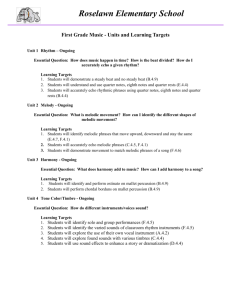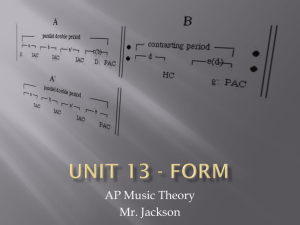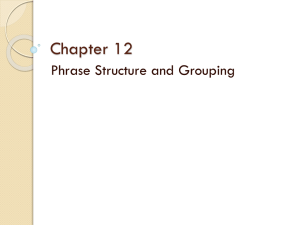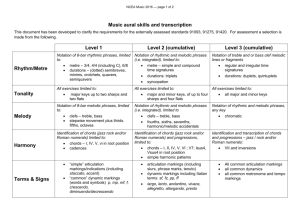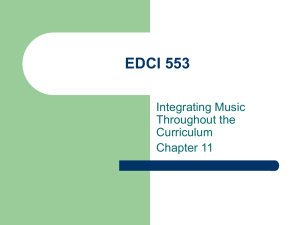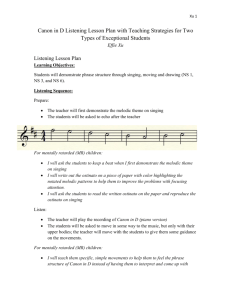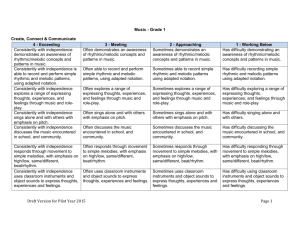Melodic Organization
advertisement
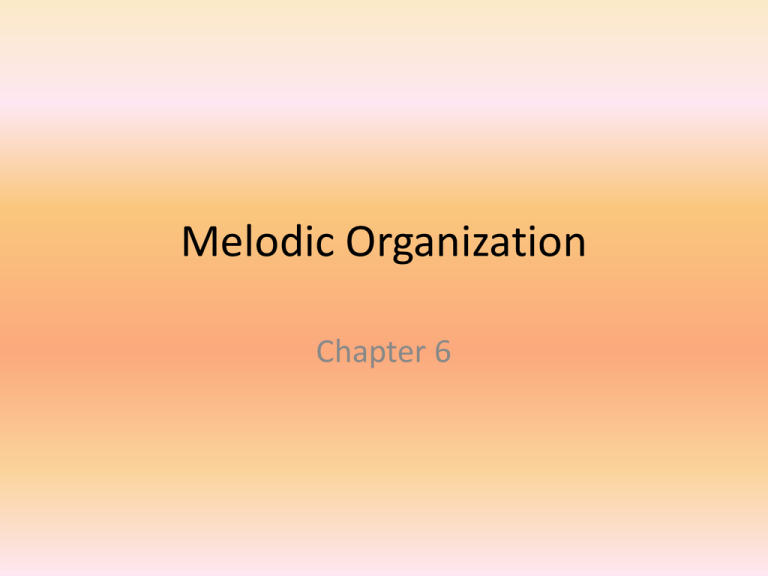
Melodic Organization Chapter 6 Motive • • • • • • • Short melodic and/or rhythmic pattern Usually only a few beats Recurs throughout a piece or section Unifying element Melodic motives – repeated pitch patterns Rhythmic motives – repeated rhythm patterns Accompaniment figures are often rhythmic motives Sequence • Immediate restatement of a melodic motive at a higher or lower pitch • Characteristics – 1. At least two segments – 2. Most contain no more than three or four segments – 3. Move in only one direction – 4. Segments continue by the same interval distance Types of Sequences • Real Sequence – Exact transposition – Will most likely include accidentals • Tonal Sequence – Segments remain diatonic to the original key – No accidentals • Modified Sequence – Segments are decorated or embellished • False Sequence – Each segment repeats a portion of the original Phrase • • • • Complete musical thought Usually contains a cadence Often 4 measures in length Can be divided into two smaller phrases called phrase members – Usually separated by a longer note value or rest – Some phrase members are repeats or in sequence – Others are simply new material Period • Two adjacent phrases can combine to form a period if: – The 2nd cadence is stronger than the 1st – They are melodically related Types of Periods • Parallel – Both phrases begin the same • Contrasting – The phrases are not melodically similar • Three-Phrase – AAB or ABB type construction – 3rd phrase must have the strongest cadence • Double Period – Many combinations of phrases – 4th phrase must have the strongest cadence Extension • Extends the length of the phrase without adding any significant melodic interest • Often includes sequence or motive • Can occur at any point in the phrase – Beginning – Middle – End Change of Mode • Modification of a phrase by transcribing it into the parallel major or minor Melodic Structure • Climax tone – the highest stressed pitch of a melody • Ascent – the general melodic movement up to the climax tone • Decent – the general melodic movement away from the climax tone • Tonic triad pitches – placed throughout the melody to establish tonality • 3 2 1 scale degrees – end of melody includes 3, 2, 1 progression

